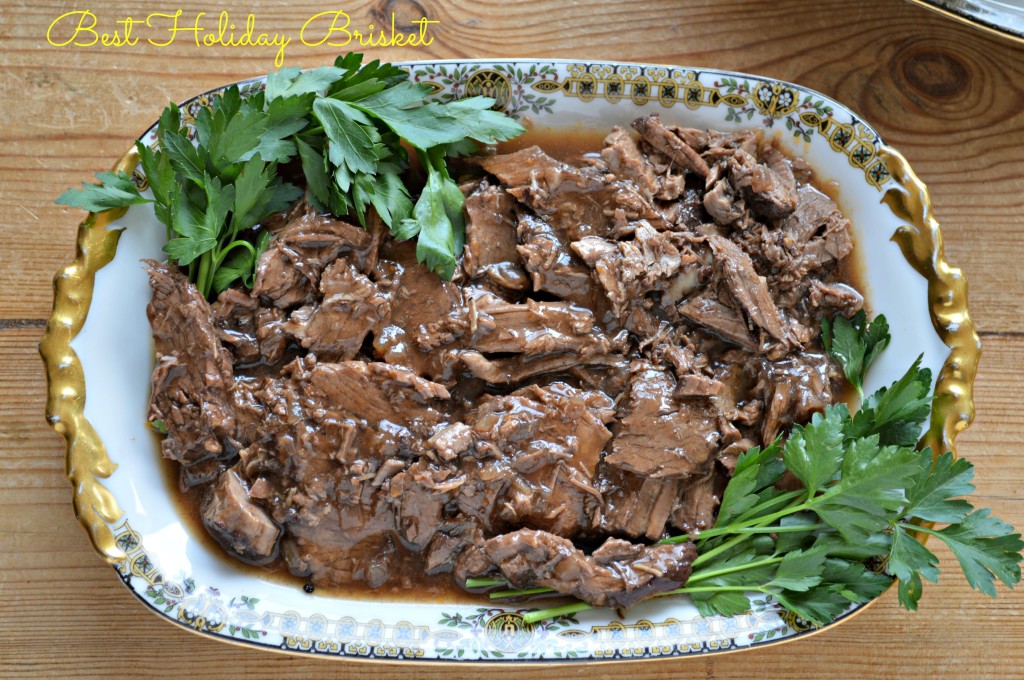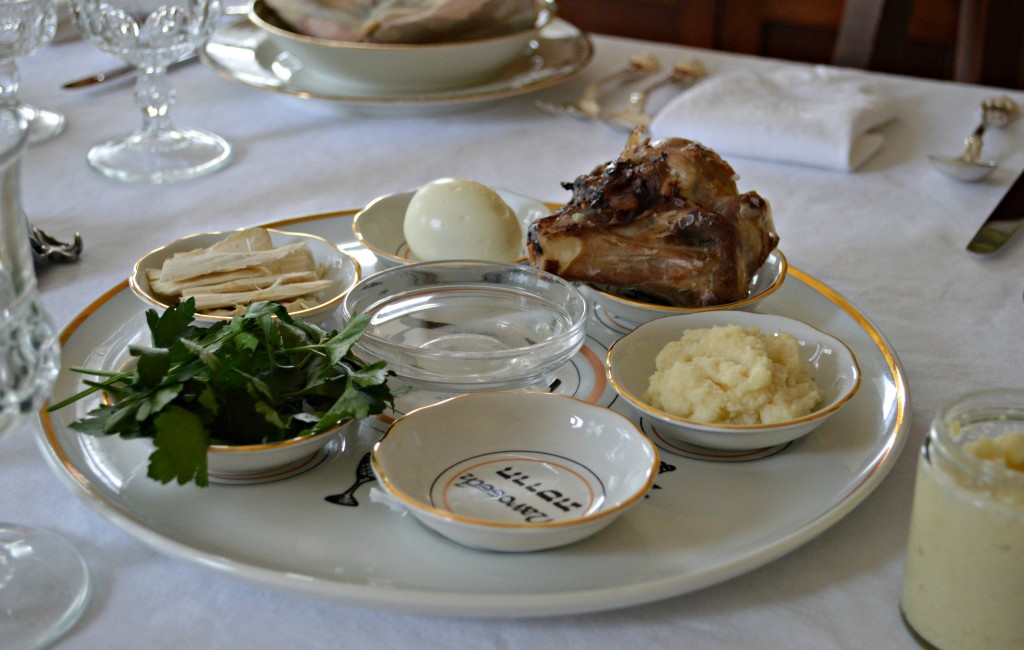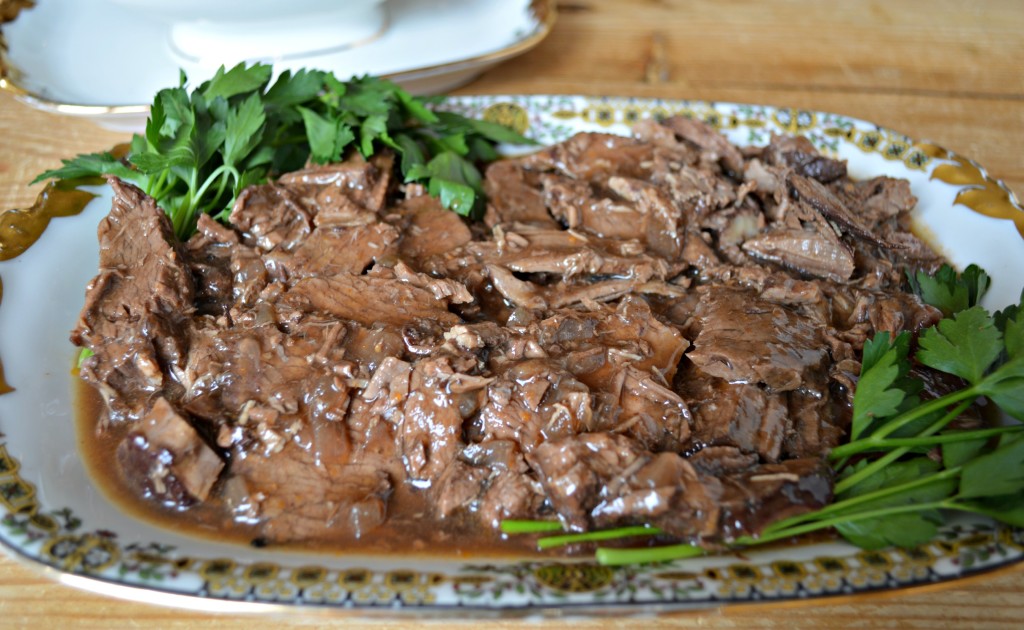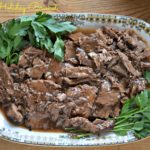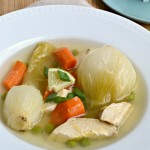With Passover only a few days away, it is time once again for me to share my brisket recipe.
Brisket is just about the ideal food to serve a crowd, which is exactly what I am expecting for our Seder. What makes brisket so perfect for large meals? First, it is an inexpensive cut of meat. Second, you can do all the work in advance. Not only possible to make brisket the day before you plan to serve it, it is mandatory.
But put aside such mundane considerations as price and convenience: brisket is a wonderful dish to serve a crowd because it is true comfort food. Shreds of meat that melt in your mouth, winey, tomatoey gravy that soaks everything it touches. Who can resist such satisfying warmth? Even children who don’t care for steak have been known to devour my brisket.
While I think every American Jew has been served briskets both transcendent and horrifying at various holidays throughout out their lives, not everyone is familiar with this cut of meat. It is so inexpensive because it is full of connective tissue and it can be inedibly tough if cooked improperly. The key to tender, melt-in-your-mouth brisket is long, slow cooking in liquid. That liquid is then served alongside the meat as a flavorful gravy. But here is another potential pitfall. The sauce can end up being greasy because of the fat from the brisket. The solution there (again) is to cook the meat the day before you plan to serve it. You can then chill the sauce and the fat will congeal at the top, making it easy to remove before reheating.
When shopping for brisket, turn your nose up at any pre-packaged varieties and stay away from anything with the words “corned beef” in it. Do not be put off by the white cap of fat on the top of the brisket. The fat will help keep the meat moist and tender during the cooking process and you can remove it before slicing. To cook your brisket, choose a large, heavy-bottomed Dutch oven with a tight-fitting lid. The brisket should fit snugly in whatever vessel you choose.
So to sum up, making brisket is a two-day process. On the first day, you will brown the brisket on the stove and then braise it in the oven in a savory gravy for hours — during which time you can basically ignore the brisket and go about your business. Once the meat is cooked, you refrigerate it and the gravy separately overnight. The next day, you thinly slice the brisket — a time-consuming job but one that is easier when the brisket is cold — and degrease the sauce.
About an hour before you want to serve the brisket, you place the slices of meat in a deep baking dish, pour the gravy over the meat, cover with foil and reheat it in a hot oven. There is always so much to do in the hour before guests arrive — isn’t it nice to serve a main dish that requires no attention from you during that time?
Chag Sameach! Happy Passover!
- 5 lb. beef brisket
- 3 TB vegetable oil
- 2 TB butter (or dairy-free margarine if following kosher laws)
- 2 onions, diced
- 4 cloves garlic, minced
- ¼ cup ketchup
- 2 cups beef broth
- 1 bottle fruity red wine such as Zinfandel or Pinot Noir
- Preheat the oven to 325.
- Heat the oil in a heavy-bottomed, oven-proof Dutch oven that fits the brisket snugly.
- Once the oil is hot, place the brisket in the pot and turn heat down to medium.
- Brown the brisket on both sides, about five minutes per side, and then remove it from the pot and place on a large plate or cutting board.
- Season the brisket with salt and pepper and set aside.
- Pour out all but 1 TB of the oil and add the butter or margarine and heat over medium heat.
- Add the onion and saute until tender, about ten minutes, scraping up any brown bits on the bottom of the pot with a wooden spoon.
- Add the garlic, ketchup, beef broth, and red wine and stir to combine.
- Return the brisket and any juices that have accumulated to the pot. The liquid should cover about ⅔ of the meat.
- Cover tightly and place pot in oven.
- Cook the brisket for three hours, turning once every hour. If the liquid level gets too low, add more beef broth or water.
- Remove the pot from the oven and refrigerate the meat and gravy separately for at least several hours but preferably overnight.
- To reheat the brisket, skim off any congealed fat from the top of the gravy.
- Preheat oven to 350.
- Using a sharp carving knife, remove the fat cap from the top of the brisket. Slice the brisket against the grain into thin slices.
- Place the sliced brisket into a 3 quart glass baking dish and pour the gravy over the meat.
- Cover the baking dish with foil and bake until the meat and gravy are heated through, 45 minutes to an hour.
- To serve, arrange the slices of meat on a platter and pass the sauce separately.
